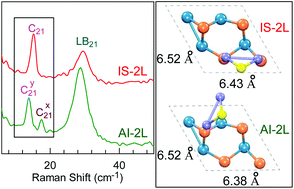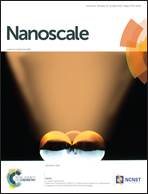Polytypism and unexpected strong interlayer coupling in two-dimensional layered ReS2†
Abstract
Anisotropic two-dimensional (2D) van der Waals (vdW) layered materials, with both scientific interest and application potential, offer one more dimension than isotropic 2D materials to tune their physical properties. Various physical properties of 2D multi-layer materials are modulated by varying their stacking orders owing to significant interlayer vdW coupling. Multilayer rhenium disulfide (ReS2), a representative anisotropic 2D material, was expected to be randomly stacked and lack interlayer coupling. Here, we demonstrate two stable stacking orders, namely isotropic-like (IS) and anisotropic-like (AI) N layer (NL, N > 1) ReS2 are revealed by ultralow- and high-frequency Raman spectroscopy, photoluminescence and first-principles density functional theory calculation. Two interlayer shear modes are observed in AI-NL-ReS2 while only one shear mode appears in IS-NL-ReS2, suggesting anisotropic- and isotropic-like stacking orders in IS- and AI-NL-ReS2, respectively. This explicit difference in the observed frequencies identifies an unexpected strong interlayer coupling in IS- and AI-NL-ReS2. Quantitatively, the force constants of them are found to be around 55–90% of those of multilayer MoS2. The revealed strong interlayer coupling and polytypism in multi-layer ReS2 may stimulate future studies on engineering physical properties of other anisotropic 2D materials by stacking orders.

- This article is part of the themed collection: 2016 Nanoscale HOT Article Collection

 Please wait while we load your content...
Please wait while we load your content...